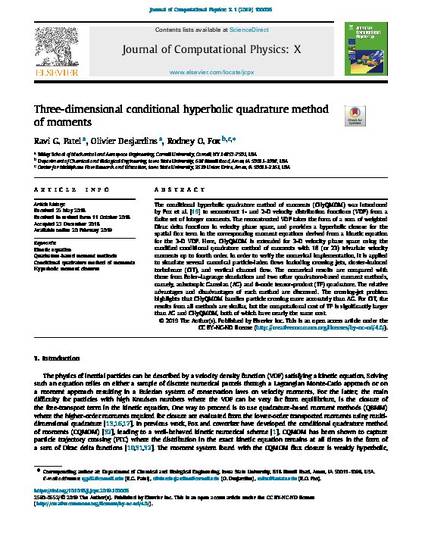
The conditional hyperbolic quadrature method of moments (CHyQMOM) was introduced by Fox et al. [19] to reconstruct 1- and 2-D velocity distribution functions (VDF) from a finite set of integer moments. The reconstructed VDF takes the form of a sum of weighted Dirac delta functions in velocity phase space, and provides a hyperbolic closure for the spatial flux term in the corresponding moment equations derived from a kinetic equation for the 3-D VDF. Here, CHyQMOM is extended for 3-D velocity phase space using the modified conditional quadrature method of moments with 16 (or 23) trivariate velocity moments up to fourth order. In order to verify the numerical implementation, it is applied to simulate several canonical particle-laden flows including crossing jets, cluster-induced turbulence (CIT), and vertical channel flow. The numerical results are compared with those from Euler–Lagrange simulations and two other quadrature-based moment methods, namely, anisotropic Gaussian (AG) and 8-node tensor-product (TP) quadrature. The relative advantages and disadvantages of each method are discussed. The crossing-jet problem highlights that CHyQMOM handles particle crossing more accurately than AG. For CIT, the results from all methods are similar, but the computational cost of TP is significantly larger than AG and CHyQMOM, both of which have nearly the same cost.
Available at: http://works.bepress.com/rodney_fox/69/

This article is published as Patel, Ravi G., Olivier Desjardins, and Rodney O. Fox. "Three-dimensional conditional hyperbolic quadrature method of moments." Journal of Computational Physics: X 1 (2019): 100006. DOI: 10.1016/j.jcpx.2019.100006. Posted with permission.